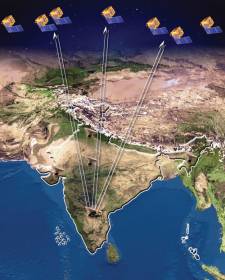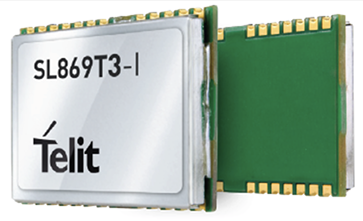Some good news has been reported and some nice progress has been made by the Indian Space Research Organization (ISRO) this year.
The successful launch of the PSLV-C41 rocket carrying India’s eighth navigation satellite IRNSS-1I from Sriharikota put smiles back on the faces of scientists of the ISRO in April amid tough times as the space agency was struggling to restore the snapped link with its recently launched communication satellite Gsat-6A.
Then word came last month that the first satellite in India’s GNSS constellation, IRNSS 1A, which was declared crippled after three atomic clocks on board it failed last year and had to be replaced by IRNSS 1H this year, will still be able to perform important messaging services.
Deputy Director, SAC/ISRO, Nilesh Desai stated such at the 6th Bengaluru Space Expo 2018. At the space expo, light was shed on the potential of IRNSS (now formally known as NavIC), the possible expansion of its capabilities and how it could be synergized with other communication and Earth Observation services, according to Geospatial World.
Regional satellite systems such as IRNSS/NavIC and Japan’s Quasi-Zenith Satellite System (QZSS) are becoming a bigger part of everyday lives in the areas they serve. India is looking to expand the capability of NavIC and build more application areas around it that could rival the ones functioning on GPS and Europe’s Galileo.
Among the reported advantages of NavIC are fast acquisition, low multipath in India due to high elevation of satellite, and no L1 jamming. There are currently two services — Standard Position Service and Restricted Services, which is primarily used for defense purposes.
April Launch
The textbook launch of PSLV-C41 took place in four stages and the total time taken for the rocket to put the satellite into the intended orbit was 19 minutes, according to The Times of India.
Navigation satellite IRNSS-1I was launched to replace IRNSS-1A, whose three Rubidium atomic clocks has stopped working two years ago. The malfunctioning of the Europe-imported atomic clocks in IRNSS-1A made it difficult to measure precise locational data from the satellite. When the time signal is missing, getting true positional accuracy becomes a problem, so ISRO felt the need to replace the faulty satellite IRNSS-1A.
IRNSS-1I weighing 1,425 kilograms and with a lifespan of a decade became the eighth satellite to join the constellation of navigation satellites called NavIC (Navigation with Indian Constellation).
Congratulating space scientists for the successful mission, ISRO chairman Dr. K. Sivan, in a press briefing soon after the launch, said, “PSLV-C41 precisely injected the eighth navigation satellite of India of the NavIC constellation and into the targeted orbit. This is the second successful launch we achieved in just 14 days after the successful GSLV launch (in March). The entire ISRO community worked tirelessly to achieve this success.”
Like its predecessors, IRNSS-1I carries two types of payloads: Navigation and Ranging. The navigation payload transmits signals for the determination of position, velocity and time and operates in the L-5 band and S-band. The atomic clocks are part of the navigation payload of the satellite, while the ranging payload consists of a C-band transponder, which facilitates accurate determination of the range of the satellite and it also carries Corner Cube Retroreflectors for laser ranging. Serving both military and civilian needs, NavIC satellites will broadcast highly accurate timing signals that a receiver can use to triangulate its location. NavIC is designed to provide accurate position information service to users in India as well as the region extending up to 1,500 kilometers from its boundary.
Last year, ISRO tried to launch the replacement satellite IRNSS-1H in August but the satellite got stuck in the heat shield (the cone-shaped topmost part) of the rocket as the controlled explosion meant to open the hatch and release the satellite in space could not happen due to a malfunction in a rocket component, according to The Times of India. The IRNSS-1H satellite had been declared space debris.
For information on an earlier ISRO launch as reported by Inside GNSS, click here.



.jpg)


